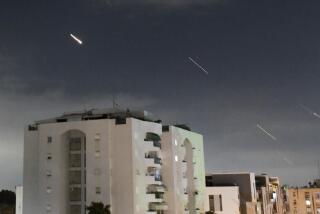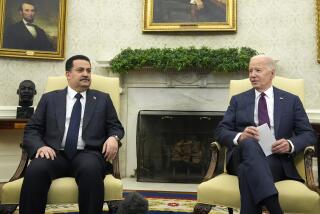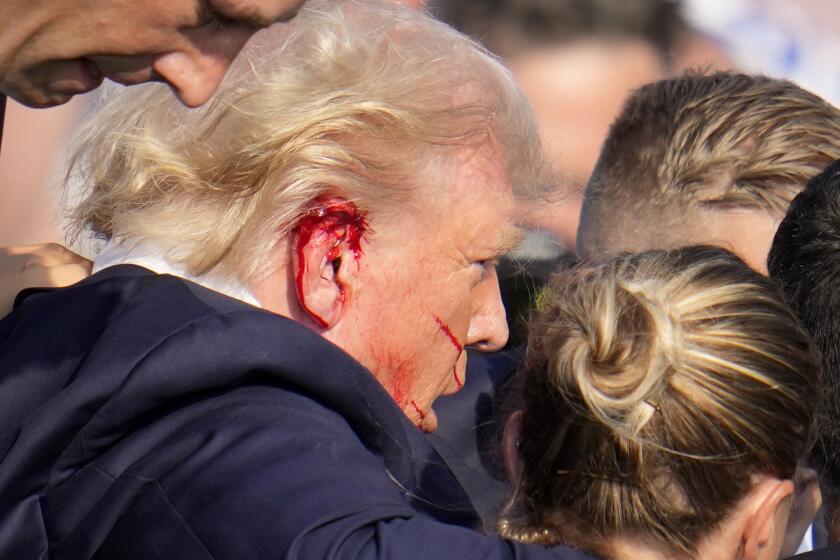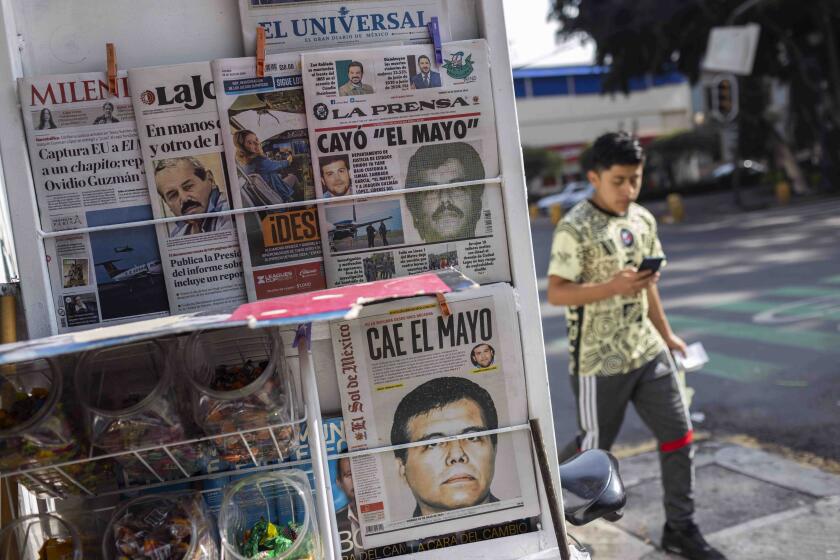Obama outlines strategy to ‘ultimately destroy’ Islamic State
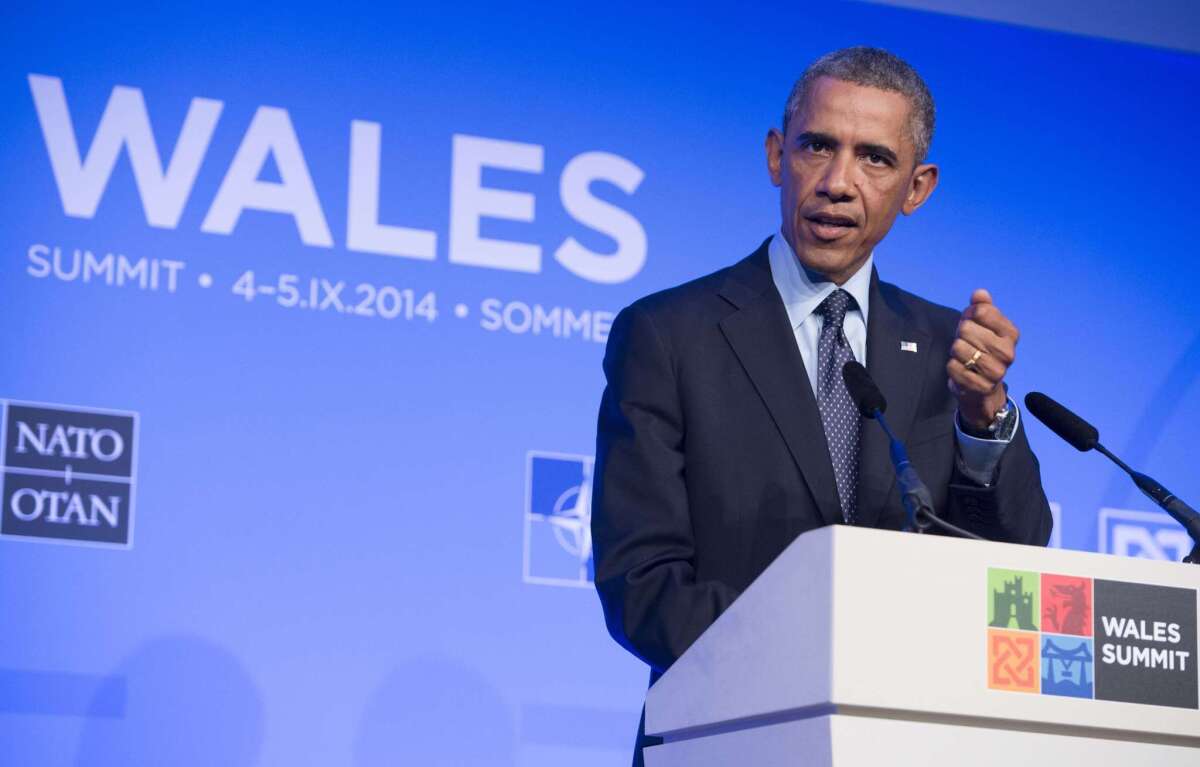
President Obama speaks at the NATO summit in Wales on Sept. 5.
The United States and its allies aim to “degrade and ultimately destroy” the militant group Islamic State, President Obama said Friday as he began to outline a U.S. strategy focused on gathering partners from Sunni Arab states and aiding fighters on the region’s front lines.
“Our goal is to act with urgency but also make sure that we’re doing it right, that we have the right targets, that there’s support on the ground … that we have a strong political coalition,” Obama said at a news conference as a NATO summit wrapped up in Wales.
In one respect, his remarks were a damage-control effort aimed at undoing the political problems he caused last week by saying that his administration did not yet have a strategy to combat the militant group, at least in the territory it controls in Syria. They also served as a rebuttal to a growing chorus of critics who’ve described Obama’s foreign policy as deliberative to the point of dithering.
Obama provided a window on what he described as his “developing strategy,” one that has expanded far beyond the initial goals of protecting U.S. personnel and reaching stranded refugees.
One major piece of the strategy for weakening the threat from Islamic State, Obama and aides said, will be the support and participation of the neighbors of Syria and Iraq.
“It is absolutely critical that we have Arab states, and specifically Sunni-majority states, that are rejecting the kind of extremist nihilism that we’re seeing out of ISIL, that say, ‘That is not what Islam is about,’ and are prepared to join us actively in the fight,” Obama said, using one of the acronyms for Islamic State.
Secretary of State John F. Kerry and Defense Secretary Chuck Hagel are to fly to the Middle East in coming days to line up regional partners, a push for a Middle Eastern coalition that recalled the Sunni Awakening movement a decade ago that brought some stabilization to Iraq during the war there.
Jordan and Saudi Arabia remain top targets for financial assistance and intelligence help, as well as the United Arab Emirates, which has already expressed support for Obama’s aims.
Obama said the approach he outlined allowed him to be deliberate in taking on Islamic State.
“You initially push them back. You systematically degrade their capabilities. You narrow their scope of action. You slowly shrink the space, the territory that they may control. You take out their leadership,” he said. “And over time, they are not able to conduct the same kinds of terrorist attacks as they once could.”
He compared it to his efforts in fighting Al Qaeda and its affiliates, which have been focused on killing top leaders. He cited the successful strike in Somalia this week that killed the founder and leader of the Al Qaeda offshoot there.
The tactics of targeted killings and regional partnerships, while familiar, raise the question of whether they’re still effective. Islamic State’s goal of establishing a caliphate in Iraq and Syria, for instance, separates it from Al Qaeda, whose mission has never included governing. And reliance on an uneasy coalition of partners with divergent interests in an unstable region carries the risk of backfiring.
Obama said that targeted strikes, which the U.S. has carried out with drones and commando raids throughout his tenure, can squeeze militant groups and allow local forces to combat them without the need for U.S. troops to join the fighting.
He said regional partners would be especially important to one new element of his strategy: hosting training camps and advising moderate opposition forces who might serve as proxy fighters in Syria.
U.S. officials have said the militants cannot be defeated without rooting them out of their stronghold in war-torn Syria, where Obama has long resisted direct involvement.
“We are going to have to find effective partners on the ground to push back against ISIL,” Obama said. “And the moderate coalition there is one that we can work with. We have experienced working with many of them. They have been to some degree outgunned and outmanned, and that’s why it’s important for us to work with our friends and allies to support them more effectively.”
Obama found a more familiar group of partners at the NATO summit. A group of allies — Britain, Australia, Canada, Denmark, France, Germany, Italy, Poland and Turkey — met as a loose coalition Friday.
The nations already contribute some nonmilitary assistance to the fight against the extremists in Iraq. They made no new public commitments, but Kerry said the group should be prepared to present a strategy at the United Nations General Assembly this month.
“This is about a broad counter-terrorism strategy,” said Richard Fontaine, president of the Center for a New American Security, adding that the president has “caught up” with what other members of his administration have said about the threat from the militants.
Administration officials acknowledged the challenge in this multipronged approach. They would not put a clear timetable on when the air campaign might expand into Syria or when the effort to bolster forces in Syria would ramp up.
The most difficult questions facing the administration involve determining what military action to take in Syria, said Michael Singh, managing director of the Washington Institute for Near East Policy.
White House officials still must decide whether to hit targets there from the air, whether to go beyond airstrikes and whether to attack the government of President Bashar Assad, which U.S. officials have said should cede power, Singh said.
“This is probably the fiercest debate, behind closed doors,” he said.
Kerry said that overcoming the militants “may take a year, it may take two years, it may take three years.”
Obama said only, “It’s not going to happen overnight. But we are steadily moving in the right direction.”
Times staff writer Paul Richter in Washington contributed to this report.
For more news on the president’s trip, follow @khennessey
More to Read
Sign up for Essential California
The most important California stories and recommendations in your inbox every morning.
You may occasionally receive promotional content from the Los Angeles Times.

